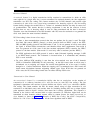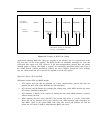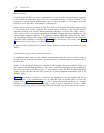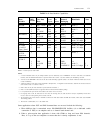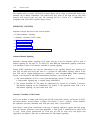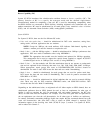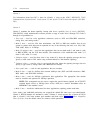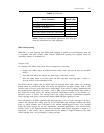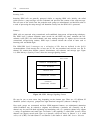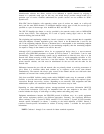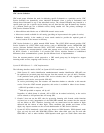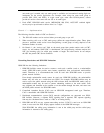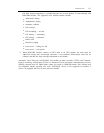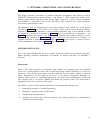
1-26
INTRODUCTION
Incoming Calls
Incoming ISDN calls are generally processed similar to outgoing ISDN calls. Initially, the called
switch receives a setup message over the D-channel and processes the contents of the setup message.
The call states of the switch, how the particular trunk groups are administered, and decisions taken as
a result of processing the setup message will determine exactly how the ISDN call is processed.
Summary
ISDN calls are processed using conventional, well-established, time-proven call-processing techniques.
The ISDN layer-3 software maintains status records for the ISDN call states, maintains the call-
reference value (CRV) for each B-channel, and starts sending messages. To request services from the
conventional call-processing routines, ISDN layer-3 software informs the switch of items such as
incoming calls and dialed digits.
The ISDN-PRI level-3 messages are a collection of IEs that are defined in the Q.931
recommendations. Each message has at least one IE. IEs are transmitted and received over the D-
channel. IEs contain three headers: protocol discriminator, call reference, and message type. Figure
1-9, ISDN Message Signaling Format, shows the message-signaling format.
FIRST OCTET
PROTOCOL DISCRIMINATOR
CALL REFERENCE
MESSAGE TYPE
INFORMATION ELEMENT
(OPTIONAL)
INFORMATION ELEMENT
▼
LAST OCTET
Figure 1-9. ISDN Message Signaling Format
IEs may be one or more octets long, depending on the element type. There are 133 different IE
identifiers (called codepoints) grouped into eight functional categories (codesets 0 through 7).
How trunk groups are constructed and how ISDN-supported features are administered determines
which B-channels may be selected to originate and terminate a particular call. Generally, any B-
channel may be used with both originating and terminating calls so a particular channel may support
a variety of applications and trunk types. In Generic 2, this capability is called ISDN dynamic where
channels can support several trunk types on a dynamic, call-by-call basis; in Generic 1, it is called
call-by-call (CBC). For both Generic 1 and Generic 2, this feature is called CBC Service Selection.



